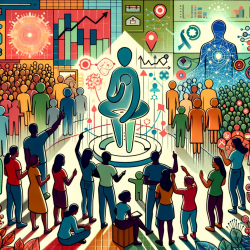Introduction
Community violence is a pervasive public health issue, particularly in urban settings. Traditional methods of studying and addressing this problem often fall short due to the complex, dynamic nature of violence. However, recent research highlights the potential of Agent-Based Models (ABMs) to provide deeper insights and more effective intervention strategies. This blog explores how practitioners can utilize findings from the research article "Agent-Based Modeling: an Underutilized Tool in Community Violence Research" to improve their skills and outcomes in violence prevention.
Understanding Agent-Based Modeling
Agent-Based Models are computational simulations where individual entities (agents) interact within a defined environment based on a set of rules. These models are particularly effective in studying complex systems like community violence, where individual actions and interactions lead to emergent behaviors that are difficult to capture with traditional statistical methods.
Key Findings from Recent Research
The research article identifies three recent studies that applied ABMs to community violence, demonstrating their potential to optimize intervention strategies. Here are some key takeaways:
- Violence Interruption: ABMs can simulate the impact of violence interrupters and police presence, showing that public health approaches often yield similar reductions in violence at lower costs compared to policing.
- Alcohol Outlet Density: Simulations revealed that reducing alcohol outlet density did not necessarily decrease violence, highlighting the complexity of social behaviors and the need for nuanced intervention strategies.
- Alcohol Taxation: ABMs showed that alcohol taxes could reduce heavy drinking and related violence, particularly among low-income populations, offering a data-driven basis for policy decisions.
Practical Applications for Practitioners
Practitioners can leverage ABMs in several ways to enhance their violence prevention efforts:
Comparing Intervention Strategies
ABMs allow practitioners to simulate different intervention strategies and compare their outcomes. For example, a city with limited resources can use ABMs to determine whether to focus on high-dose greening in a few areas or low-dose greening across a broader region.
Studying Social Contagion
ABMs can model the diffusion of social behaviors, such as how anti-violence norms spread through a community. This can help in designing interventions that leverage social networks for maximum impact.
Identifying Unintended Consequences
System-level changes can have unintended consequences. ABMs can help practitioners anticipate these outcomes, allowing for more informed decision-making. For instance, improving collective efficacy might not reduce racial disparities in violence unless segregation is also addressed.
Challenges and Limitations
While ABMs offer significant advantages, they also come with challenges:
- Model Complexity: Deciding which components to include in the model can be subjective and requires a balance between realism and simplicity.
- Data Availability: Parameterizing and validating ABMs require robust data, which may not always be available at the necessary spatial or temporal scales.
Despite these challenges, ABMs provide a powerful tool for understanding and addressing community violence, particularly when traditional methods fall short.
Conclusion
Agent-Based Models offer a promising avenue for enhancing community violence prevention efforts. By simulating complex interactions and comparing different intervention strategies, ABMs can provide valuable insights that inform data-driven decisions. Practitioners are encouraged to explore this underutilized tool to optimize their violence prevention programs and policies.
To read the original research paper, please follow this Agent-Based Modeling: an Underutilized Tool in Community Violence Research.










